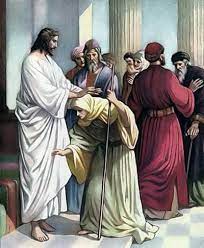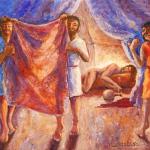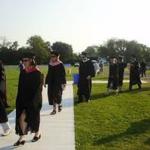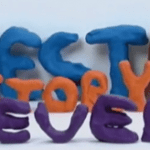I consider myself to be well informed and well read, but every once in a while I read or hear something so new that I have to say, “I’ve never thought about that before!’ followed quickly by “This is really important. Why haven’t I ever thought about this before?” I’ve had this experience more than once this summer.
One of my favorite podcasts over the past few months has been “The Bible for Normal People” with Pete Enns and Jared Byas. I appreciate their perspective and their guests, particularly their willingness to treat the Bible as a special book but without kid gloves and the beginning warning that “this is the Word of God.” Perhaps I most appreciate Enns’ irreverent sense of humor, on display when each episode is introduced by his pronouncing “Welcome to ‘The Bible for Normal People’, the only God-ordained podcast on the Internet!”
Both Enns and Byas are theologians; one of the most interesting things that they say frequently is that there is always an adjective before theology. In other words, there is no such thing as theology in the abstract or per se. Theology is always shaped and formed through a lens or framework, such as “Protestant” or “Catholic” theology, “LGBTQ+” theology, or “Jewish” theology (and of course, there are many more fine-tuned and granular adjectives within those very broad frameworks).
I’ve learned a great deal from this podcast over the past months, but none more than from their episodes involving “disability” theology. Two episodes in particular were teaching moments for me. The first, “Disability Theology is for Everyone,” is with Stephanie Tait in May 2021. Tait is the author of the 2019 book The View from Rock Bottom: Discovering God’s Embrace in Our Pain. The second podcast is from this past May with Amy Kenney, with the same title as her 2022 book My Body is Not a Prayer Request: Disability Justice in the Church. I highly recommend both podcast episodes; I am currently in the process of reading the books.
Amy Kenny begins the first chapter of My Body is Not a Prayer Request with a personal story that, unfortunately, sounds very familiar. She is in church; she also happens to be in a wheelchair. A stranger approaches her and says “God told me to pray for you. God wants to heal you!” Amy Kenny has put up with this sort of invasion of her privacy many times in the past, thinking that “if I could just assume a veneer of piety, it would inoculate me against their patronizing prayers and invasive interrogations.” But this time she chose not to play the game, telling the woman that “I don’t need prayer for healing. My body has already been sanctified and redeemed.”
Not surprisingly, the woman is shocked, saying that “You need to hear that God wants to heal you. If you stopped resisting, you would be free already.” Reflecting on this experience, Kenny writes that
This woman is an echo of every prayerful perpetrator before her. They have many faces, but they always approach me with the same paternalistic confidence, eager to rid me of my wheelchair or cane. On repeat, they applaud the stories where Jesus healed a disabled outcast like me, without stopping to consider that curing bodies and healing lives are not the same thing.
Last Sunday’s gospel text from Luke 13 is a good introductory story for developing the distinction between curing and healing.
 As Jesus is teaching in a synagogue, a disabled woman “bent over and . . . quite unable to stand up straight” shows up. Unlike many similar stories in the gospels, this woman doesn’t even ask Jesus for anything. Jesus notices her, lays his hands on her, and says a few words; “Immediately she stood up straight and began praising God,” followed by a tense conversation with the religious authorities about whether it is permissible to do such work on the Sabbath. From our contemporary Western perspective, Jesus’ miracles are a matter of seeing a person with a disability and “fixing” it. Problem solved. This is how I, along with millions of other Christians, have learned to interpret the stories of Jesus’ miracles. Jesus encountered someone who was less than a full human being due to disability and restored them to full humanity by curing them.
As Jesus is teaching in a synagogue, a disabled woman “bent over and . . . quite unable to stand up straight” shows up. Unlike many similar stories in the gospels, this woman doesn’t even ask Jesus for anything. Jesus notices her, lays his hands on her, and says a few words; “Immediately she stood up straight and began praising God,” followed by a tense conversation with the religious authorities about whether it is permissible to do such work on the Sabbath. From our contemporary Western perspective, Jesus’ miracles are a matter of seeing a person with a disability and “fixing” it. Problem solved. This is how I, along with millions of other Christians, have learned to interpret the stories of Jesus’ miracles. Jesus encountered someone who was less than a full human being due to disability and restored them to full humanity by curing them.
Both Amy Kenny and Stephanie Tait spend a good deal of time pushing back against this perspective, arguing that it is a result of conflating “curing/fixing” and “healing,” as well as a significant contributor to “ableism,” the belief that disabled people are less valuable or less human than their nondisabled counterparts. When Amy Kenny told the woman in church that she did not need prayer for healing, it is because, as she says on “The Bible for Normal People” podcast, “My disabled body bears the image of God and doesn’t need to be fixed or changed or cured.”
The Greek word often translated “healing” in the New Testament is sozo, which means “to make whole” or “to save.” Kenny points out that in Jesus’ world, healing meant a lot more than fixing a physical ailment.
They talked about healing as restoring relationships and integrating someone back into social and religious systems . . . Jesus’ healing is not purely about a physical alteration but about reestablishing right relationship between humanity and God and, hopefully, between individuals and community.
A person with a disability in Jesus’ culture was an outcast, someone considered unworthy to participate fully in community life. Sure, Jesus cured illnesses and disabilities, but primarily as a means to fully restoring the person to their community and social connections. A friend once told Jeanne and me about a horrific car accident that had left him close to dead with bones shattered and organs damaged several decades earlier. “Western medicine saved my life,” he said, “and Eastern medicine gave me my life back.” That’s the difference between curing/fixing and healing.
It is difficult for many nondisabled people, me included, to wrap their brains and imaginations around the possibility that being nondisabled is not necessarily “better” than being disabled. If as Christians we believe that human beings are made in the image of God, doesn’t it make sense that a disabled or damaged body is a distortion of that image? In her podcast interview, Stephanie Tait draws our attention to a familiar story from the gospels that is “hands down the most powerful story in scripture for me as a disabled woman,” a passage that also blew my mind when I saw it differently for the first time through her eyes.
Everyone knows the story of “Doubting Thomas,” the disciple who would not believe that Jesus was risen until he could put his finger in the holes in Jesus’ hands and put his hand in the wound in his side caused by a Roman spear. Artistic depictions of this event abound, almost always reducing the wounds to sanitized and tiny scars. Stephanie Tait continues
But when you read the text, it’s gruesomely clear that that’s not what we’re talking about. We’re talking about, like, he literally says, take your thumb and just jam it into this gaping, open wound in my hand. Take your hand and literally just plunge it into my insides in this gaping hole in my side. We’re not talking about I’m all better and there’s these little freckles now, we’re talking about unhealed wounds.
This was the resurrected Jesus . . . and he comes back in glorious perfection with a damaged body that most of us would cringe at or turn away from. For Stephanie Tait, that changed everything.
It was such a turning point for me to know that I serve a wounded savior that can be fully glory and also not healed, that there’s nothing broken or incomplete or anything less than the fullness of the image of God in an unhealed body like mine because he came back with an unhealed body. It was huge. Absolutely huge for me.
I’m in the early weeks of processing what I’ve read, heard, and learned about disability theology this summer. There will be more essays to come, including a comparison of white privilege and ableism, as well the various ways in which the church has institutionalized discrimination against persons with disabilities. As Amy Kenny writes,
Perhaps instead of trying to pray away the cane, prayerful perpetrators should ensure that buildings are accessible to me . . . Perhaps instead of immediately dismissing my body as less valuable, prayerful perpetrators should wonder how my disabled body displays the image of God to our community. Perhaps instead of always attempting to cure, prayerful perpetrators should yearn for holistic healing.













